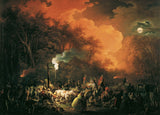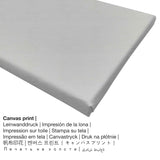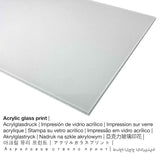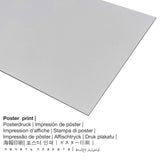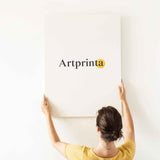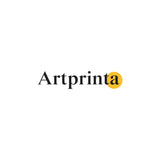Johann Josef Schindler, 1836 - Ọgwụgwụ nke ọkụ ọkụ Stuwerschen na May 7, 1833 - mbipụta nka mara mma.
Ụtụ gụnyere. Mbupu gbakọrọ na ndenye ọpụpụ.
Nbipụta nka mara mma nke onwe gị
Ihe nka nka The end of the Stuwerschen fireworks on May 7, 1833 e sere ya onye n’ezie nwe- Johann Josef Schindler. The 180 years old piece of art has the size 68 x 94 cm - akụkụ etiti: 89 x 115 x 8 cm ma arụpụtara ya na ọkara mmanụ na kwaaji. Nowadays, this work of art is included in the art collection of Belvedere. With courtesy of © Belvedere, Vienna, nọmba ngwa ahịa: 2549 (ikike ngalaba ọha). Ihe kredit nke artpiece bụ nke a: nyefee site na Kunsthistorisches Museum, Vienna na 1926. Kedu ihe ọzọ, nhazi nke mmepụta dijitalụ bụ odida obodo and has a ratio of 1.4 : 1, which implies that the length is 40% longer than the width. Johann Josef Schindler was a painter, whose art style can be classified as Realism. The Realist artist lived for 59 afọ, born in 1777 in Pölten and deceased in the year 1836.
Ozi nka sitere na Belvedere (© - Belvedere - Belvedere)
Born in St. Poelten Johann Josef Schindler studied from 1790 at the Vienna Academy of Fine Arts in the class of landscape painting with Johann Christian Brand. In its Landschaftsveduten he appeared committed his life this baroque training, with the influence of his teacher is more noticeable in formals, because in a vast, magnificent view of nature. An after-effects of the baroque tradition in the form of a nocturnal effect piece is evident in the present work: Shown is the departure of spectators crowd that had gathered in the Prater, to participate in the "Stuwer'schen fireworks spectacle". This popular amusement had tradition since the end of the 18th century. Johann Georg Stuwer had launched and left to the Jesuits in the Prater for a "fireworks Place" build: Before a public gallery stood up as a kind of stage a soaring wall of interconnected horizontal and vertical slats. From contemporary reports indicate that the pyrotechnician with their different fireworks machines out against the black of the night sky out sayings figural scenes yes "could conjure" Landscape views, even; based on representations battle was even taken sometimes to the current war events position. continued by Stuwers descendants, the Viennese public could enjoy these fireworks shows up in the eighties of the 19th century, with a short interruption in the revolutionary year 1848. Traditionally, the spectacle with a violent "cannonade" was completed, visitors crowd forest Prater followed along the direction indicated by plugged flaming pitch pans paths through towards the city began to move. This picture tells of the tragic event on May 7, 1833 to be cut short as the fireworks had since the nearby Prater huts had risen by arson in flames. While the drama of the event red-colored clouds and confusion comes to the fire in the population expressed the representation forwards obtained by the arrest of the arsonist left anecdotal. Sources: collection of material to a Austrian artist lexicon compiled by Rudolf Schmidt, Library of the Austrian Gallery in Vienna. Literature: Reischl, F .: Wien for Biedermeier, Vienna 1921, p 98 ff [Sabine Grabner in. This .: romanticism, classicism, Biedermeier. In the Austrian Gallery Belvedere, the second verb. Ed. Vienna 1997, p 96-97]
Data ndabere na nka nka izizi
| Aha nka: | "The end of the Stuwerschen fireworks on May 7, 1833" |
| Nhazi nke ihe nka: | sere |
| Okwu nche anwụ: | nkà nke oge a |
| Nhazi oge: | 19th narị afọ |
| Afọ okike: | 1836 |
| Afọ nka: | ihe dị ka afọ 180 |
| Usoro nka izizi: | mmanụ na kwaaji |
| Akụkụ izizi: | 68 x 94 cm - akụkụ etiti: 89 x 115 x 8 cm |
| Ụlọ ihe ngosi nka / ebe: | Belvedere |
| Ebe ebe ngosi nka: | Vienna, Austria |
| Ibe weebụ: | Belvedere |
| Ụdị nka nka: | ngalaba ọha |
| Site n'aka: | © Belvedere, Vienna, nọmba ngwa ahịa: 2549 |
| kreditline ọrụ nka: | nyefee site na Kunsthistorisches Museum, Vienna na 1926 |
Banyere omenka
| Ihe nkiri: | Johann Josef Schindler |
| Aha ndị ọzọ: | schindler johann, Schindler J. J., schindler j., johann schindler, Johann Joseph Schindler, joh. joseph schindler, Schindler Joh. Joseph, j. j. schindler, j. schindler, Schindler Joh. Jos., Schindler Johann Josef, Johann Josef Schindler, josef schindler |
| Gender: | nwoke |
| Obodo onye nka: | German |
| Ọrụ onye na-ese ihe: | onye na-ese ihe |
| Mba onye si: | Germany |
| Nhazi nke onye nka: | omenkà nke oge a |
| Ụdị nka: | Ihe ngosi |
| Afọ ọnwụ: | 59 afọ |
| A mụrụ: | 1777 |
| Ebe omuma: | Pölten |
| Afọ nwụrụ: | 1836 |
| Obodo ọnwụ: | Vienna |
Nye iwu ngwaahịa ọkacha mmasị gị
The product dropdown menu gives you the possibility to choose your prefered size and material. You can select your preferred size and material between the choices:
- Bipụta akwụkwọ mmado n'ihe kwaaji: A poster is a printed canvas with a fine surface finish. It is used for placing the fine art print using a special frame. Please bear in mind, that depending on the size of the canvas poster print we add a white margin of around 2-6cm around the artwork, which facilitates the framing with your custom frame.
- Aluminom dibond mbipụta (ọla): These are metal prints on aluminium dibond material with an outstanding depth effect. A non-reflective surface creates a contemporary look. For your Direct Aluminium Dibond option, we print the artpiece right on the aluminium composite surface. Colors are luminous and bright in the highest definition, the details of the print appear very clear.
- Mbipụta iko acrylic (nke nwere ezigbo mkpuchi iko): An acrylic glass print, often described as a print on plexiglass, transforms the original into brilliant décor. Additionally, it makes a viable alternative to canvas or dibond prints.
- Mbipụta kanvas: The canvas direct print is a printed cotton canvas mounted on a wooden stretcher. Also, a canvas makes a nice, warm effect. Canvas prints are relatively low in weight. This means, it is quite simple to hang your Canvas print without the support of extra wall-mounts. Canvas prints are suited for any type of wall.
Nkọwapụta ihe
| Nkewa edemede: | ọmarịcha nka |
| Usoro mmeputakwa: | dijitalụ mmeputakwa |
| Usoro mmepụta: | Mbipụta UV ozugbo (mbipụta dijitalụ) |
| Production: | Germany |
| Stockdị ngwaahịa: | a na-achọ |
| Ihe eji eme atụmatụ: | nchịkọta nka (mmeputakwa), mma mgbidi |
| Ntuziaka onyonyo: | nhazi odida obodo |
| Oke akụkụ: | (ogologo: obosara) 1.4: 1 |
| Akụkụ akụkụ pụtara: | ogologo bụ 40% ogologo karịa obosara |
| Nhọrọ dị: | Mbipụta kwaaji, mbipụta ọla (aluminium dibond), mbipụta akwụkwọ mmado (akwụkwọ kwaaji), mbipụta enyo acrylic (nwere ezigbo mkpuchi iko) |
| Kanvas n'elu etiti ihe ndọtị (mbipụta akwa akwa): | 70x50cm - 28x20", 140x100cm - 55x39" |
| Mbipụta iko acrylic (nwere ezigbo mkpuchi iko) nhọrọ nha: | 70x50cm - 28x20", 140x100cm - 55x39" |
| Nhọrọ nke mbipụta akwụkwọ mmado (akwụkwọ kwaaji): | 70x50cm - 28x20" |
| Mbipụta nke aluminom (ihe aluminom): | 70x50cm - 28x20", 140x100cm - 55x39" |
| Nhazi mbipụta nka: | agunyeghi |
Nkwupụta iwu: We try our utmost to depict the art products in as much detail as possible and to demonstrate them visually on the product detail pages. At the same time, the tone of the printed materials, as well as the imprint can vary marginally from the presentation on the device's screen. Depending on your screen settings and the nature of the surface, not all colors can be printed 100% realistically. Because our are processed and printed manually, there might as well be minor deviations in the size and exact position of the motif.
© echekwabara ikike nwebiisinka, Artprinta.com (Artprinta)

